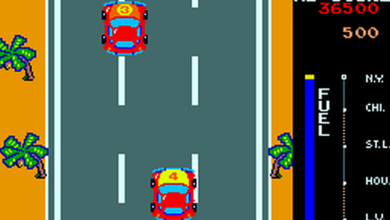The year was 1997 and Tiger Electronics released a game console with one target in mind: to conquer the teen-adult portable gamers away from Nintendo’s Game Boy! Now this wasn’t as crazy as it may sound today.
Article by Drew McCabe
Game.com commercial:
https://www.youtube.com/watch?v=Dp460zM_PGA
This was 1997 after all, a pre-smart phone world when laptop’s were still annoyingly high priced and the older gamers who grew up on Atari and NES in North America were now increasingly buying portable units for gaming to take while on business trips or holidays.The North American market seemed ripe for the launch, the Atari Lynx was already discontinued in 1995, Sega was discontinuing the Game Gear that year in 1997, and Nintendo was steadily selling Game Boys still, however being Pokemon was still Japan only at this time, there was no boom-period yet to drive the console’s sales. Considering these factors, Tiger thought the timing was perfect to swoop in.
Having experience for almost twenty years at this point with portable LCD video games, and a brief dabble in 1995 with a LCD video game multi-console, the R-Zone, they set their sights on the next step up in technology from LCDs, a standard 8-bit system utilizing ROM cartridges like other portables of the time.However, how could they make it bigger and better than the Game Boy and steal the device’s proverbial thunder? The solution would also lead to the system’s downfall.
The solution and plus side was to aim it at teens/adults and make it unlike any other portable before by giving it a variety of built-in, cool features.The system would feature numerous innovations a head of it’s time that no other system would provide until the Nintendo DS seven years later, these included a touch screen that used a stylus, a navigation menu with built-in games and features, and internet access (with use of a dial-up modem due to the time).
Another great feature is it featured two cartridge slots on all early models so gamers could take more with them on the road, the system navigation menu allowed to switch between cartridges with ease and was a really convenient feature for the time. So with all of those amazing features why didn’t it become the monster gaming unit Tiger hoped it’d be? To start, there is myth the Game.Com just didn’t sell, which is false, it just sold poorly, but not bad enough to be deemed a complete sales bomb. By the end of it’s life world wide it sold about 300,000 units. Now, yes, 300,000 is not the 118 million Game Boy would do by its end, but literally that is still thousands upon thousand of folks, mostly in the USA, whom bought the unit and it’s games enough for Tiger to support it until 2000, so a little over 3 years of life isn’t too bad for it’s run if we are being fair. That said there are some very specific reasons it sold poorly.
As mentioned, Tiger’s innovativeness would also be its downfall, and the early touch screen they chose to use would provide what has been universally regarded as the worst ghosting ever to come from a portable system. Now if one could get past the blurry screen, for some reason the thumb-pad control was also frequently unresponsive with a handful of games, creating it an exercise in patience almost for the buyer.
To make matters worse for it’s launch, Tiger’s other follies were no third party support and not catering to the video game media at the time. In terms of the third party, Tiger made no kits available (the necessary ingredient to get third parties interested and developing). To make those matters a bit more sticky, Tiger did have titles like Sonic Jam and Fighters Mega Mix from Sega, or Mortal Kombat Trilogy from Williams, but Tiger was licensing those ideas and then building them in-house, like they did their LCD game licenses the previous 20 years, not vice-a-versa. The result is these games at times feel like weird black market knockoffs more than they did a true Mortal Kombat game or such. Tiger also skipped over any of the video game media at the time not giving them press releases, games to review etc;, and so the result is it just wasn’t covered there. In Tiger’s mind, they did what they did for their success with the LCD games and that was just put out a few TV commercials, make sure it shows up in a few toy catalogs and have faith that it will sell itself. However the world of video gaming was especially changing and Tiger didn’t realize the market of teens and adults they wanted were avid readers of all the video game magazines on the stands and at the time, and so the result was to further miss their target mark. Now, not everything is bad with the Game.Com and it’s games. In fact several games are very playable and must haves if you decide to hunt down the system. Puzzle games like Lights Out, Henry, Quiz Wiz: Cyber Trivia, Monopoly, Wheel of Fortune and Wheel of Fortune 2, all stand out due their simplified graphics make it easy to play, and frequently take advantage of the touch screen to play. Middle ground games include Duke Nukeem 3D, Frogger (based off the 1997 version), Centipede (based off the 1998 version) and Mortal Kombat Trilogy, although Mortal Kombat fans should note it is the weirdest character selection possible (literally just Cyrax, Ermac, Jade, Mileena, Sektor, Kitana, Motaro, Nightwolf, Noob Saibot, Raiden, Reptile and Shao Kahn).
There are of course what most feel are unplayable messes like it’s versions of Sonic Jam, Fighters Megamix and Lost World:Jurassic Park, however these titles hold up a lot better on emulation, so if you don’t want the real deal, you may actually get some enjoyment out of them this way, but beware the archaic midi scores are still a downer.
Over all there are some gamers who just love their Game.Com and can fondly remember opening it up Christmas morning in 1997, before leaving it behind for a Neo-Geo Pocket, or jumping on the Pokemon bandwagon, or buying an import Bandai Wonderswan, etc;. Tiger didn’t dabble for quite a bit of time with a console after this, but they’d continue to have much success still with LCD games into the early-otts. Eventually Tiger was bought by Hasbro Toys and now Hasbro has its own video game division that makes third party games for other consoles.
A failure to many but a success to some, we can at least say Tiger Game.Com gave it a shot, and holds a record for inventiveness (again the touch screen/internet beat he Nintendo DS by seven whole years). If you have some time to take the dare, give it a shot.
Article by Drew McCabe






